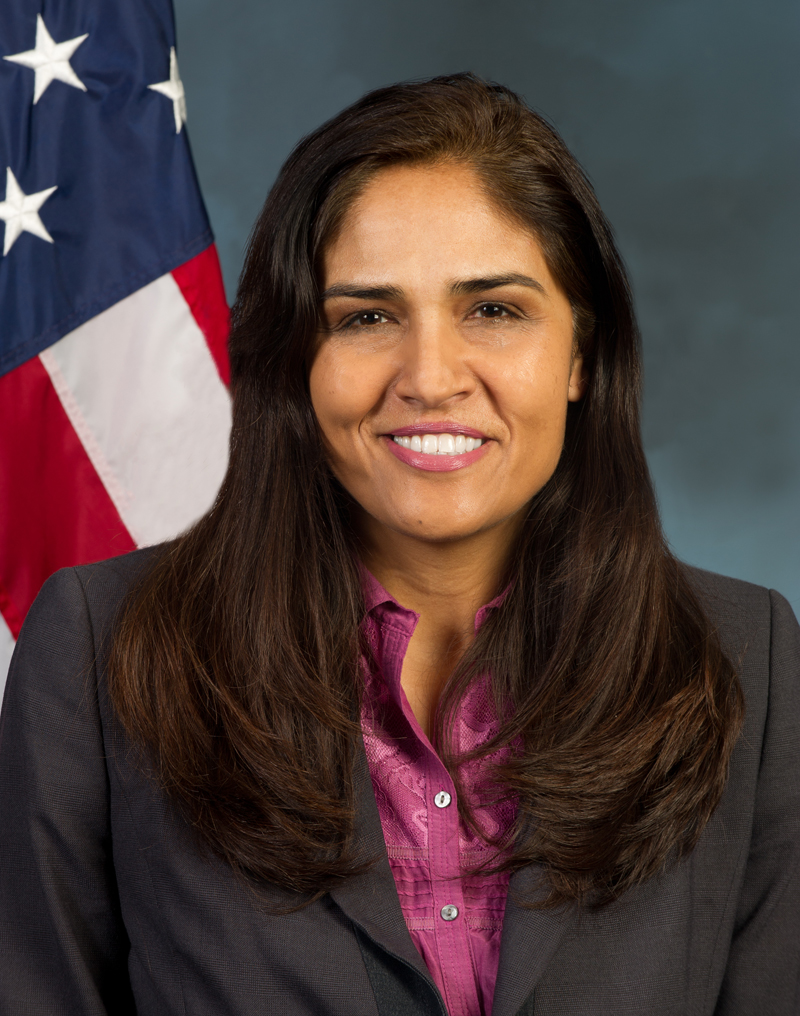The currently senior-most official with the Federal Housing Administration (FHA) indicated last week that all the previous FHA Home Equity Conversion Mortgage (HECM) program guidance handed down to the reverse mortgage industry via Mortgagee Letter (ML) could be considered voluminous for new and existing industry participants, and FHA is currently looking at ways in which to consolidate all previous HECM program guidance into the Single Family Housing 4000.1 Handbook.
This is according to Principal Deputy Assistant Secretary (PDAS) for the Office of Housing and the FHA Lopa P. Kolluri, who gave a keynote address to the National Reverse Mortgage Lenders Association (NRMLA) Virtual Policy Conference held last week.
After initially speaking about certain Home Equity Conversion Mortgage (HECM) program updates while laying out relevant policy priorities related to the program under the administration of U.S. Department of Housing and Urban Development (HUD) Secretary Marcia Fudge and President Joe Biden, PDAS Kolluri described how she sees the reverse mortgage industry working together with FHA and HUD to accomplish similar goals, while also talking about some of what FHA hopes to accomplish for the program in 2021.
Mortgagee Letter guidance
The manner in which the reverse mortgage program has received policy guidance from FHA and HUD is primarily by Mortgagee Letter (ML), with the content of MLs largely determined by the priorities of leadership at HUD and FHA at the time in which they are published, and certain MLs published can rescind guidance which had been issued in previous MLs.
PDAS Kolluri detailed for NRMLA virtual attendees a desire in 2021 to potentially streamline the guidance which has previously been issued. This would allow industry participants to reference the Single Family Handbook for a more holistic perspective on reverse mortgage industry policy guidance from the government.
“I was actually surprised to learn that the HECM program is still governed by so many individual Mortgagee Letter policy documents,” she explained. “And I find it sort of confusing and inefficient to some extent. And so, we need to take a look at that pretty seriously and make sure that it works for both program participants and for HUD. I’m hopeful that we can get to a consolidated set of policies incorporated into our Single Family Handbook this year.”
Consolidating all of the guidance issued thus far into a single place could be generally beneficial for existing and new reverse mortgage industry participants, Kolluri contended. The detail with which the industry operates to ensure that HUD and FHA are aware of reverse mortgage industry concerns and ideas was also praised by PDAS Kolluri, and she related optimism at the prospect of working together more closely with the leadership of the trade association and industry participants to further refine and stabilize the HECM program.
“Our stellar single family team has certainly impressed on me how – the importance of the HECM portfolio and focusing on the HECM portfolio – how important it is to you, and how important it is to FHA,” Kolluri said. “One of the things I’m most impressed with is the level of detail and care that goes into making HECM a reality for those who want to age in place. I commend the work that [NRMLA is] doing [and] I look forward to working with you very closely and continuing to make a focus on HECM a reality.”
When reached about PDAS Kolluri’s comments, NRMLA President Steve Irwin related that he anticipates a positive working relationship with leadership at FHA going forward and in consolidating previous guidance for the HECM program into the Single Family Handbook.
“NRMLA and its members are looking forward to getting the Handbook updated and across the finish line,” Irwin told RMD over the phone.
Current ML guidance beginnings
In mid-2013, FHA was scrutinized in a Senate subcommittee hearing after an annual audit of the FHA’s Mutual Mortgage Insurance Fund (MMIF) projected substantial reverse mortgage losses in late 2012. HUD officials at the time had been seeking more authority over reverse mortgages, and it had been indicated at the time that certain members of Congress supported giving HUD the additional reverse mortgage authority the Department sought.
In May 2013, then-members of the U.S. House of Representatives Denny Heck (D-Wash.) and Mike Fitzpatrick (R-Penn.) introduced a bill to Congress called the “Reverse Mortgage Stabilization Act of 2013,” under which a key provision was to grant FHA the authority it sought to issue reverse mortgage program guidance through ML documents. Without the authority to provide such guidance via ML, HUD was limited to the process of program changes that went through a lengthy rulemaking process, limiting its nimbleness in responding to needs which could arise.
Necessity of ML guidance, especially in light of COVID-19
President Barack Obama signed the Reverse Mortgage Stabilization Act into law at the Oval Office in the presence of legislative co-sponsors on the Democratic and Republican sides of the aisle, and officials with HUD and NRMLA. Prior to the passage of the Act, a total of 78 HECM-related MLs were issued between 1988 and 2013, according to a tabulation by HUD.
Since the law’s signing, a total of 71 MLs with HECM program guidance have been issued by FHA. Not all relevant MLs are issued under the authority of the Reverse Mortgage Stabilization Act, however, and HUD’s tabulation did not distinguish between those that have and have not been issued under such authority. The ability to issue HECM policy guidance in this manner has allowed FHA to act far more effectively and nimbly in response to needs and events of the time, based on the perspectives of HUD officials and industry leaders who spoke with RMD.
That nimbleness has been positively emphasized for the reverse mortgage industry recently. The amount of ML guidance for the program accelerated significantly in 2020 due to the COVID-19 coronavirus pandemic, with 23 HECM-related MLs issued in 2020 alone with an additional seven HECM MLs having arrived in 2021 so far.
This situation likely helps to emphasize why additional flexibility in terms of program guidance from FHA is necessary, due to the massive disruption caused by the pandemic. To PDAS Kolluri’s point, consolidating previously-issued guidance into the Single Family Handbook will make the process of referencing such guidance simpler going forward.




